8.4 /10 1 Votes
8.4/10 TV | 8.3/10 IMDb First episode date 30 September 1951 | |||||||||||||||||||||||||||||||||
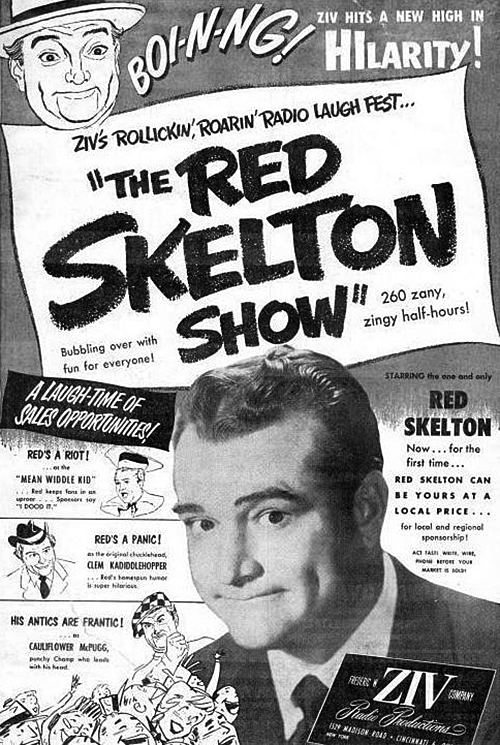 | ||||||||||||||||||||||||||||||||||
Also known as ''The Red Skelton Hour'' Directed by Seymour BernsJack DonohueJohn GauntEd HillerBill HobinTerry KyneHoward A. QuinnMartin Rackin Cast Red Skelton, Ginger Rogers, Art Gil | ||||||||||||||||||||||||||||||||||
The best of the red skelton show
The Red Skelton Show is an American variety show that was a television staple for two decades, from 1951 to 1971. It was second to Gunsmoke (1955–1975) and third to The Ed Sullivan Show (1948–1971) in the ratings during that time. The host of the show, Richard Bernard "Red" Skelton, who had previously been a radio star, had appeared in several motion pictures as well. Although his television series is largely associated with CBS, where it appeared for more than fifteen years, it actually began and ended on NBC. During its run, the program received three Emmy Awards, for Skelton as best comedian and the program as best comedy show during its initial season, and an award for comedy writing in 1961. In 1959 Skelton also received a Golden Globe for Best TV Show.
Contents
- The best of the red skelton show
- Origins 1950s
- Format during the 1960s
- Opening monologue
- Guest stars
- Comedy sketches
- Final years 19701971
- The move to NBC 1970
- Skeltons later TV career
- References
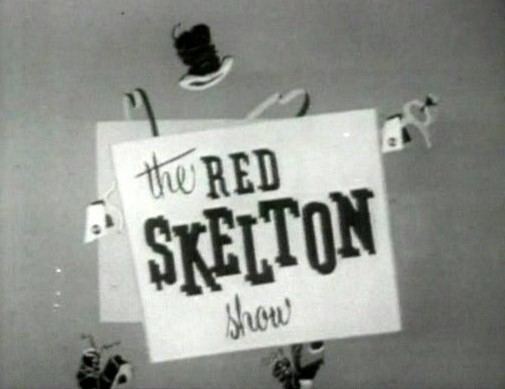
Origins: 1950s
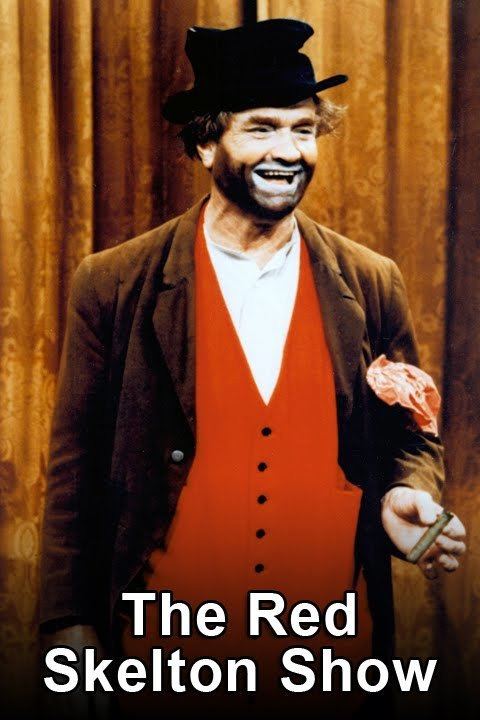
Red Skelton's network television program began at the start of the 1951 fall season on NBC (for sponsor Procter & Gamble). The MGM agreement with Skelton for television performances did not allow him to go on the air before September 30, 1951. After two seasons on Sunday nights, the program was picked up by CBS in the fall of 1953 and moved to Tuesday night, the time slot with which it would become primarily associated during most of its run. After his first CBS season the program was moved to Wednesday night and expanded to an hour for the summer of 1954 only; it was then reduced back to a half-hour for a time, later expanded again, returning to Tuesday night, where it would remain for the next sixteen years (co-sponsored by Johnson's Wax and Pet Milk between 1955 and 1962).
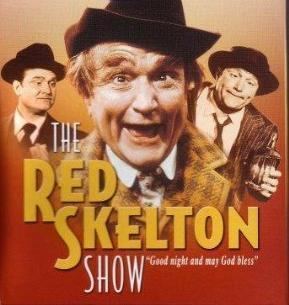
The program was produced at Desilu Productions and CBS Television City in Hollywood, and over five years, from 1955 through 1960, was telecast in color approximately 100 times. In 1960, Skelton purchased the Chaplin studios, with plans to continue using the facility for his television show and for making films. It was the most colorcast of the few programs CBS aired in color during this period. By 1960, CBS no longer manufactured television sets (unlike its rival NBC's parent company, RCA) and pulled the plug on colorcasts. With the exception of a few specials and some yearly broadcasts of The Wizard of Oz, CBS would not colorcast again on a regular basis until the 1965-66 fall season when the network could no longer avoid public demand and rising sales in color television sets.
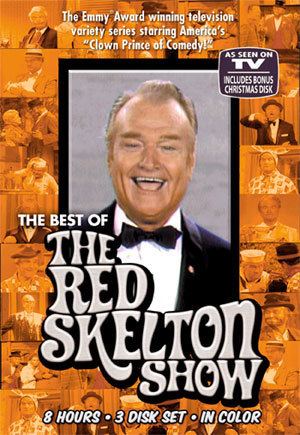
Skelton was infatuated with his appearance on color television, and he cajoled CBS to colorcast the program (In 1961, Skelton also invested in three rental remote vans which had full live, film, and color videotape capability). Although visionary, the venture in color was premature and when it failed, CBS bought Skelton's facilities (formerly Charlie Chaplin Studios) as part of renewing Skelton's contract.

From 1956 to 1962, Sherwood Schwartz (later widely known for creating the popular sitcoms Gilligan's Island and The Brady Bunch, among others) was head writer of Skelton's show, for which Schwartz won an Emmy Award in 1961.
Format during the 1960s

In September 1962, the program was again expanded to a full hour (becoming The Red Skelton Hour) and remained in this longer format for the balance of its CBS run. The format of the program itself during this period was quite simple.
Opening monologue
Skelton opened with a monologue. The monologue often lapsed into character humor, including "Gertrude and Heathcliff, the Two Seagulls", which he performed by crossing his eyes and sticking his thumbs into his armpits for "wings". (Johnny Carson, who was a writer on this program for a period, reminisced about writing for this spot.)
Guest stars
This was followed by a guest-star performance, often a singer. Musical accompaniment was generally provided by the show's orchestra and led by its well-known bandleader, David Rose. He was also the composer of the show's familiar signature tune, "Holiday for Strings"(U.S. Copyright Registration Date 26-3-1942). The guest then appeared with Skelton in a comedy sketch.
Among the notable guest stars on the program were western film stars Amanda Blake and Roscoe Ates, who played a sheriff in the 1961 episode "Candid Clem". John Wayne, Jack Benny, Phyllis Diller, George Raft, Martha Raye, and Carol Channing were other luminaries who made appearances. In 1965 Diana Ross & the Supremes were musical guests on the show and that same year The Rolling Stones made their American television debut on the Skelton show. Popular television actress Phyllis Avery appeared twice in "Clem's Watermelons" (1961) and "Nothing But the Tooth" (1962). Billy Gray, who played Bud Anderson Jr. on "Father Knows Best" guest starred after the former show ended its six-year run.
Comedy sketches
The sketches were usually built around one of Red's many characters, including "Deadeye", an incredibly inept sheriff in the Old West; "San Fernando Red", a shady real estate agent (named for the San Fernando Valley, which was still a largely rural area when the show began); "Cauliflower McPugg", a punchdrunk boxer, "George Appleby", a hen-pecked husband, "Junior, the Mean Widdle Kid" (whose trademark line was, " If l dood it, l get a whippin'.........l DOOD IT!"), "Clem Kadiddlehopper", a hick who was identified in at least one sketch as being from Cornpone County, Tennessee, and "Freddie the Freeloader". Freddie was a bum with a heart of gold, who was played by Skelton (and in one episode in 1961, by Ed Sullivan) in clown makeup reminiscent of Emmett Kelly but somehow not as sad. Freddie could be either a speaking character or totally pantomimed. While many of Skelton's other characters originated on his radio shows, Freddie was created for television in 1952. Skelton's father, Joseph, who died two months before his youngest son, Richard, was born, was once a clown for the Hagenbeck-Wallace Circus. Skelton, who had spent some time working for the same circus as a youth, copied his father's clown makeup for Freddie.
In its later years the show generally finished with "The Silent Spot", with Skelton pantomiming Freddie or another silent character. (It was hard for some younger viewers to accept that such an overwhelmingly visual, physical performer had once been a staple of radio.) After "The Silent Spot", the show closed with Red looking into the camera and saying sincerely, "Good night and may God bless."
While the vast majority of Skelton's skits were comedy, there were a few serious segments. One memorable segment came in 1969, when Skelton performed a self-written monologue about the Pledge of Allegiance, providing commentary on the meaning of each phrase of the Pledge. CBS received 200,000 requests for copies; the company subsequently released the monologue as a single recording by Columbia Records.
Final years: 1970–1971
CBS ended its association with the program in early 1970. This apparently marked the beginning of one of several attempts by CBS to downplay programming whose primary appeal was to "Middle America", an audience more rural and also somewhat older than that generally desired by network television advertisers. Marketers were moving towards a younger, "hipper", and more urban audience (see the Rural Purge).
The move to NBC: 1970
At least in part due to Skelton's iconic status, the program was picked up by NBC in late 1970. However, the program that aired was quite different from the one that Skelton's CBS audience was used to seeing. The new set was dark, devoid of the backdrops that viewers had seen on CBS. The show was cut back to its original half-hour length and it was moved from Tuesday to Monday nights.
But perhaps the biggest change was that the show began to incorporate "regulars" for the first time along with Skelton, Rose, and Rose's orchestra. A repertory company of young, comic actors and actresses was added as well as veteran performers such as Eve McVeagh and The Burgundy Street Singers (previously seen after an abortive comeback on network television by 1950s folk singing star Jimmie Rodgers on ABC two years earlier.)
The new format never really worked; the audience sensed that there was little chemistry between Skelton and his repertory company. The program ended in March 1971, although selected programs from this final season were rerun on NBC on Sunday nights during mid-1971, so it could be said that Skelton's network television career had ended exactly where it had begun.
Skelton's later TV career
Skelton continued to make appearances for many years afterwards, increasingly as a nostalgic figure, but was never again a regular feature of network television programming. He was awarded the Academy of Television Arts and Sciences Governors Award, a lifetime achievement award, in 1986. Skelton was inducted into the Academy of Television Arts & Sciences' Television Hall of Fame in 1989.
